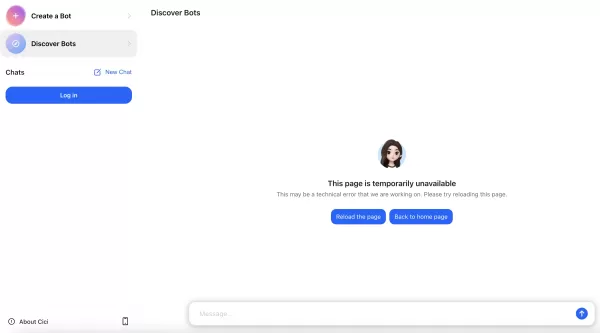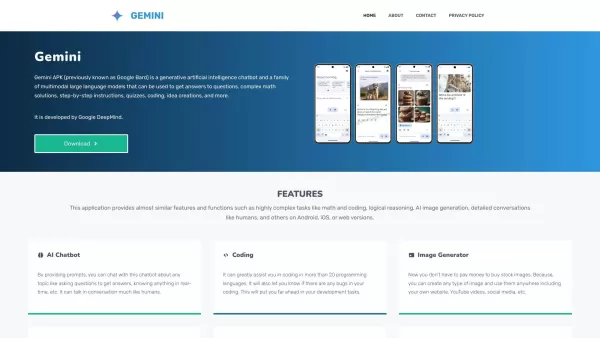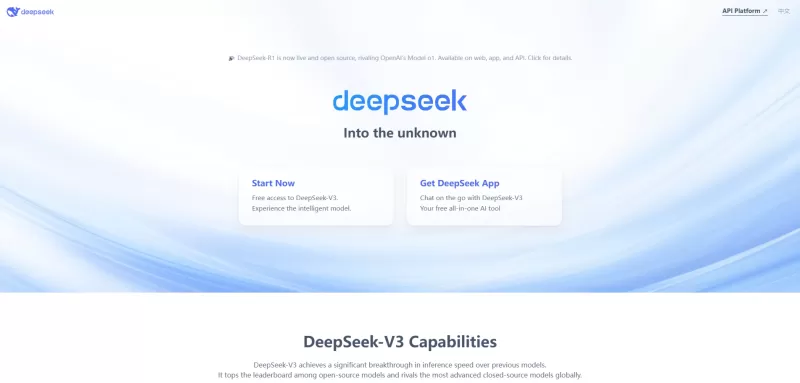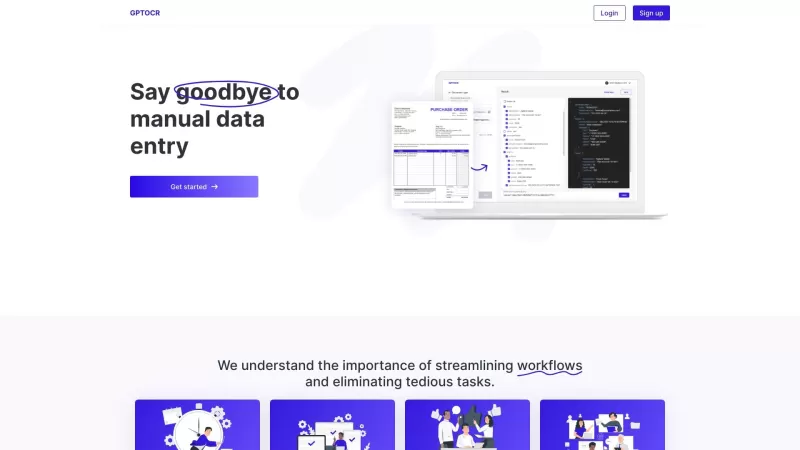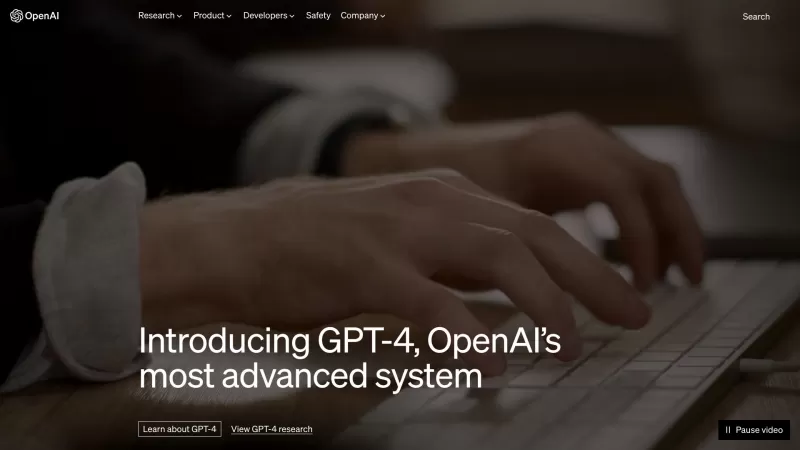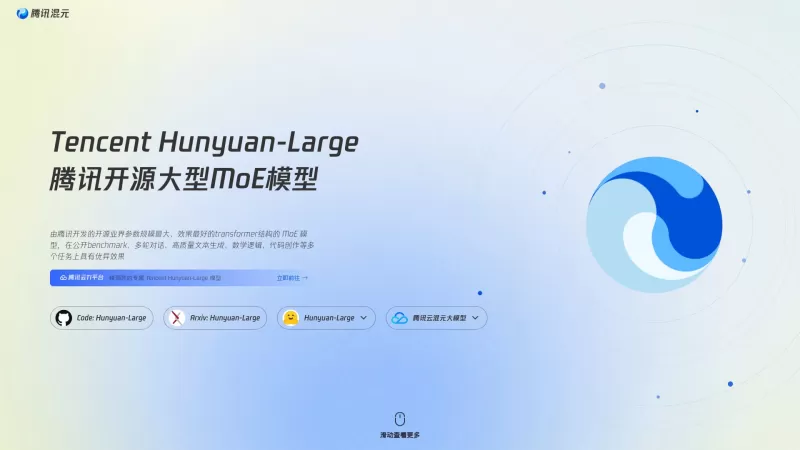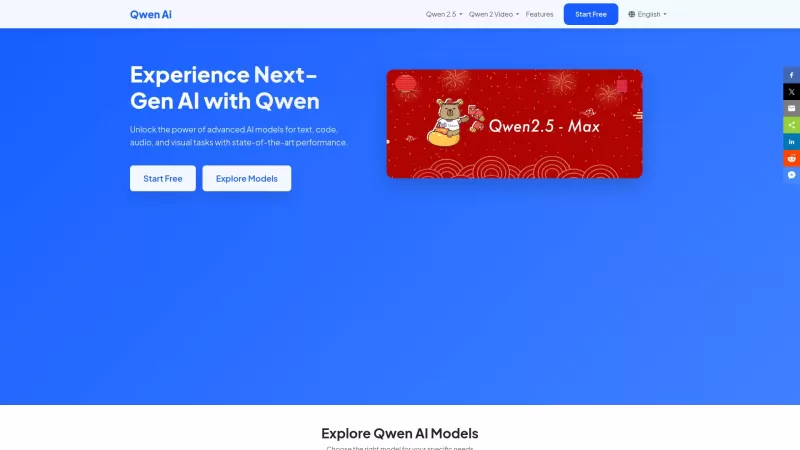Revolutionizing Finance: How Graph AI Powers Personalized Financial Services
In the modern financial sector's dynamic environment, delivering customized customer interactions and implementing robust fraud prevention measures have become essential priorities. Graph database technology combined with Artificial Intelligence (AI) is proving instrumental in addressing these challenges. This analysis demonstrates how the powerful combination of graph databases and AI is revolutionizing financial services by uncovering deeper customer insights and establishing more sophisticated fraud detection mechanisms.
Key Advantages
Graph databases amplify AI capabilities by mapping contextual connections across data points.
The fusion of graph technology and AI enables hyper-personalized financial services.
Real-time analytical capabilities allow instant responsiveness to evolving client requirements.
Graph solutions support sophisticated querying of existing data infrastructures.
The convergence of graph databases with AI/ML dramatically enhances identification of fraudulent patterns.
Networked fraud schemes become visible through relational data mapping.
Transformative Potential in Financial Services
Data Enrichment Through Graph Technology
Conventional relational databases often fail to adequately represent the intricate connections in financial data. Graph databases specialize in capturing these complex relationships, converting isolated data points into an interconnected web of meaningful associations. This network structure provides AI systems with enhanced contextual understanding for more insightful decision-making.
How Graphs Power Better Data Analysis:
- Relational Mapping: Prioritizes connections between data elements to reveal hidden correlations and insights.
- Contextual Enhancement: Knowledge graphs add semantic meaning, transforming raw data into intelligence.
- AI Optimization: Structured relational views enhance machine learning efficiency and scalability.
The ultimate objective is leveraging this technological synergy to craft financial experiences tailored to each individual's unique profile and needs.
Strategic Benefits of Graph Implementation:
- Deeper Data Comprehension: Uncovers previously invisible relationships and trends
- Enhanced AI Accuracy: Richer context yields more precise analytical outcomes
- Enterprise Scalability: Manages expanding data volumes and complexity
- Instant Analysis: Enables immediate response to market shifts and client needs
Implementation Example:
- Intuit: Their product ecosystem (TurboTax, QuickBooks, Mint) harnesses graph technology to interconnect financial data, powering personalized user experiences.
Real-Time Financial Intelligence
A primary benefit of graph databases is their capacity for instantaneous data processing, allowing financial institutions to adapt immediately to client needs and market fluctuations.
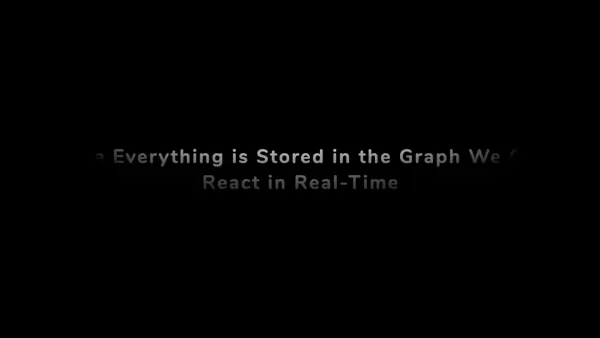
Legacy batch-processing systems requiring hours or days for completion are obsolete in current market conditions.
Advantages of Real-Time Processing:
- Instant Customer Insights: Continuous behavioral pattern recognition
- Customized Offerings: Product recommendations based on live financial data
- Proactive Service: Potential issues identified and addressed preemptively
This responsiveness is critical for maintaining superior service quality and competitive positioning.
Graph Technology in Action: OpenCorporates
Advanced Corporate Data Analysis
OpenCorporates employs graph databases to execute sophisticated queries across their corporate information repository, enabling real-time examination of business relationships and ownership hierarchies.
Operational Benefits:
- Connection Mapping: Effortless visualization of corporate linkages
- Ownership Analysis: Streamlined beneficial ownership tracing
- Current Intelligence: Continuous relationship data updates
- Anomaly Detection: Identification of suspicious corporate activities
By implementing graph technology, OpenCorporates delivers valuable corporate intelligence, empowering users to make better-informed business decisions.
Practical Implementation
Fraud Detection Applications
Graph databases provide powerful solutions for detecting complex fraudulent schemes and illicit financial activities. Successful implementation involves:
- Data Consolidation: Aggregate diverse data streams into a unified graph structure
- Pattern Recognition: Apply graph algorithms to spot anomalous connections
- Continuous Monitoring: Establish real-time alert systems for suspicious activities
- Machine Learning Integration: Enhance detection models with graph-derived features
- Visual Investigation: Utilize visualization tools to explore fraud networks
- System Refinement: Regularly update models to address emerging fraud techniques
Actionable Implementation Steps:
- Data Aggregation: Compile comprehensive datasets for algorithmic analysis
- Algorithm Development: Create detection models for suspicious patterns
- Database Maintenance: Ensure continuous data freshness
- Monitoring Systems: Deploy instant alert mechanisms
Solution Pricing Analysis
Graph Database Investment Models
Graph database solutions offer multiple pricing structures, influenced by factors including database scale, user count, feature sets, and deployment methods (cloud vs on-premise). Common models include:
- Subscription Plans: Recurring fees based on resource consumption
- Pay-Per-Use: Charges tied to actual query volumes/data processed
- License Purchases: One-time software purchases with optional support packages
- Open-Source Options: Free base software with paid professional services
Cost Evaluation Criteria
When assessing graph database investments, consider:
- Growth Accommodation: Pricing flexibility for expanding operations
- Feature Requirements: Core functionality versus premium add-ons
- Support Services: Included support levels and premium options
- System Compatibility: Integration expenses with current infrastructure
- Long-Term Costs: Multi-year total ownership calculations
Advantages and Limitations
Benefits
- Superior relationship analysis
- Advanced fraud identification
- Immediate data processing
- Enterprise-grade scalability
Challenges
- Implementation complexity
- Specialized query language requirements
- Integration hurdles
- Licensing and support expenses
Core Functionality
Essential Features
Graph databases deliver specialized capabilities for managing connected data:
- Optimized Relationship Storage: Architecture designed for connection management
- Connection-Centric Design: Intuitive relationship modeling
- Specialized Query Tools: Languages customized for graph traversal
- Enterprise Scalability: Support for massive, complex datasets
- Instant Processing: Live data analysis capabilities
- Data Integrity: ACID compliance guarantees
- Built-In Analytics: Network analysis algorithms included
Financial Services Applications
Industry-Specific Implementations
Financial institutions are applying graph technology across critical functions:
- Anomaly Detection: Revealing sophisticated fraud networks
- Regulatory Compliance: Tracking complex fund movements for AML
- Client Engagement: Hyper-personalized relationship management
- Risk Assessment: Analyzing counterparty connections
- Regulatory Adherence: Documenting compliance pathways
- Market Analysis: Relationship-based trading strategies
Frequent Queries
Financial Sector Applications
What advantages do graph databases provide financial institutions?
Financial organizations benefit from enhanced fraud detection, personalized client services, real-time analytics, and superior relationship management capabilities.
Architectural Differences
How do graph and relational databases differ fundamentally?
Graph databases focus on documenting relationships as primary data elements, while relational systems organize structured data in tables. Graph models excel at analyzing complex networks and connections.
System Compatibility
Is integration with existing financial systems feasible?
Yes, most graph solutions offer comprehensive integration tools and APIs to connect with current financial infrastructure.
Additional Considerations
Fraud Prevention Enhancement
How specifically do graphs improve fraud discovery?
By mapping the complete web of financial relationships, graph databases expose sophisticated fraudulent networks that conventional systems miss. The addition of AI/ML further enhances detection accuracy.
AI/ML Synergies
What role does artificial intelligence play in graph analytics?
AI and ML models leverage graph-derived features like network centrality and connection paths to improve pattern recognition and predictive capabilities.
Implementation Guidance
How should financial institutions begin adopting graph technology?
Organizations should first identify high-value use cases, then evaluate vendor solutions before commencing phased implementation with appropriate data migration strategies.
Related article
 Google Introduces 9 Exciting New Features in Home App Soft Launch
Google Home App Unveils Major Updates in 2025 PreviewGoogle has significantly enhanced its Home app with several groundbreaking features currently available in public preview. Smart home enthusiasts can now enjoy Nest Cam's picture-in-picture functio
Google Introduces 9 Exciting New Features in Home App Soft Launch
Google Home App Unveils Major Updates in 2025 PreviewGoogle has significantly enhanced its Home app with several groundbreaking features currently available in public preview. Smart home enthusiasts can now enjoy Nest Cam's picture-in-picture functio
 Grammarly Expands into AI-Powered Productivity Platform
Grammarly has announced plans to acquire the popular email productivity app Superhuman, according to an official statement. The move strategically aligns with Grammarly's existing email optimization features, which currently assist professionals in r
Grammarly Expands into AI-Powered Productivity Platform
Grammarly has announced plans to acquire the popular email productivity app Superhuman, according to an official statement. The move strategically aligns with Grammarly's existing email optimization features, which currently assist professionals in r
 Jony Ive’s Secretive OpenAI Device Reportedly Ditching Screens
The enigmatic collaboration between OpenAI and renowned designer Jony Ive is developing a pocket-sized, context-aware device that notably won't include screens or take the form of eyewear. Internal communications obtained by The Wall Street Journal r
Comments (0)
0/200
Jony Ive’s Secretive OpenAI Device Reportedly Ditching Screens
The enigmatic collaboration between OpenAI and renowned designer Jony Ive is developing a pocket-sized, context-aware device that notably won't include screens or take the form of eyewear. Internal communications obtained by The Wall Street Journal r
Comments (0)
0/200
In the modern financial sector's dynamic environment, delivering customized customer interactions and implementing robust fraud prevention measures have become essential priorities. Graph database technology combined with Artificial Intelligence (AI) is proving instrumental in addressing these challenges. This analysis demonstrates how the powerful combination of graph databases and AI is revolutionizing financial services by uncovering deeper customer insights and establishing more sophisticated fraud detection mechanisms.
Key Advantages
Graph databases amplify AI capabilities by mapping contextual connections across data points.
The fusion of graph technology and AI enables hyper-personalized financial services.
Real-time analytical capabilities allow instant responsiveness to evolving client requirements.
Graph solutions support sophisticated querying of existing data infrastructures.
The convergence of graph databases with AI/ML dramatically enhances identification of fraudulent patterns.
Networked fraud schemes become visible through relational data mapping.
Transformative Potential in Financial Services
Data Enrichment Through Graph Technology
Conventional relational databases often fail to adequately represent the intricate connections in financial data. Graph databases specialize in capturing these complex relationships, converting isolated data points into an interconnected web of meaningful associations. This network structure provides AI systems with enhanced contextual understanding for more insightful decision-making.
How Graphs Power Better Data Analysis:
- Relational Mapping: Prioritizes connections between data elements to reveal hidden correlations and insights.
- Contextual Enhancement: Knowledge graphs add semantic meaning, transforming raw data into intelligence.
- AI Optimization: Structured relational views enhance machine learning efficiency and scalability.
The ultimate objective is leveraging this technological synergy to craft financial experiences tailored to each individual's unique profile and needs.
Strategic Benefits of Graph Implementation:
- Deeper Data Comprehension: Uncovers previously invisible relationships and trends
- Enhanced AI Accuracy: Richer context yields more precise analytical outcomes
- Enterprise Scalability: Manages expanding data volumes and complexity
- Instant Analysis: Enables immediate response to market shifts and client needs
Implementation Example:
- Intuit: Their product ecosystem (TurboTax, QuickBooks, Mint) harnesses graph technology to interconnect financial data, powering personalized user experiences.
Real-Time Financial Intelligence
A primary benefit of graph databases is their capacity for instantaneous data processing, allowing financial institutions to adapt immediately to client needs and market fluctuations.

Legacy batch-processing systems requiring hours or days for completion are obsolete in current market conditions.
Advantages of Real-Time Processing:
- Instant Customer Insights: Continuous behavioral pattern recognition
- Customized Offerings: Product recommendations based on live financial data
- Proactive Service: Potential issues identified and addressed preemptively
This responsiveness is critical for maintaining superior service quality and competitive positioning.
Graph Technology in Action: OpenCorporates
Advanced Corporate Data Analysis
OpenCorporates employs graph databases to execute sophisticated queries across their corporate information repository, enabling real-time examination of business relationships and ownership hierarchies.
Operational Benefits:
- Connection Mapping: Effortless visualization of corporate linkages
- Ownership Analysis: Streamlined beneficial ownership tracing
- Current Intelligence: Continuous relationship data updates
- Anomaly Detection: Identification of suspicious corporate activities
By implementing graph technology, OpenCorporates delivers valuable corporate intelligence, empowering users to make better-informed business decisions.
Practical Implementation
Fraud Detection Applications
Graph databases provide powerful solutions for detecting complex fraudulent schemes and illicit financial activities. Successful implementation involves:
- Data Consolidation: Aggregate diverse data streams into a unified graph structure
- Pattern Recognition: Apply graph algorithms to spot anomalous connections
- Continuous Monitoring: Establish real-time alert systems for suspicious activities
- Machine Learning Integration: Enhance detection models with graph-derived features
- Visual Investigation: Utilize visualization tools to explore fraud networks
- System Refinement: Regularly update models to address emerging fraud techniques
Actionable Implementation Steps:
- Data Aggregation: Compile comprehensive datasets for algorithmic analysis
- Algorithm Development: Create detection models for suspicious patterns
- Database Maintenance: Ensure continuous data freshness
- Monitoring Systems: Deploy instant alert mechanisms
Solution Pricing Analysis
Graph Database Investment Models
Graph database solutions offer multiple pricing structures, influenced by factors including database scale, user count, feature sets, and deployment methods (cloud vs on-premise). Common models include:
- Subscription Plans: Recurring fees based on resource consumption
- Pay-Per-Use: Charges tied to actual query volumes/data processed
- License Purchases: One-time software purchases with optional support packages
- Open-Source Options: Free base software with paid professional services
Cost Evaluation Criteria
When assessing graph database investments, consider:
- Growth Accommodation: Pricing flexibility for expanding operations
- Feature Requirements: Core functionality versus premium add-ons
- Support Services: Included support levels and premium options
- System Compatibility: Integration expenses with current infrastructure
- Long-Term Costs: Multi-year total ownership calculations
Advantages and Limitations
Benefits
- Superior relationship analysis
- Advanced fraud identification
- Immediate data processing
- Enterprise-grade scalability
Challenges
- Implementation complexity
- Specialized query language requirements
- Integration hurdles
- Licensing and support expenses
Core Functionality
Essential Features
Graph databases deliver specialized capabilities for managing connected data:
- Optimized Relationship Storage: Architecture designed for connection management
- Connection-Centric Design: Intuitive relationship modeling
- Specialized Query Tools: Languages customized for graph traversal
- Enterprise Scalability: Support for massive, complex datasets
- Instant Processing: Live data analysis capabilities
- Data Integrity: ACID compliance guarantees
- Built-In Analytics: Network analysis algorithms included
Financial Services Applications
Industry-Specific Implementations
Financial institutions are applying graph technology across critical functions:
- Anomaly Detection: Revealing sophisticated fraud networks
- Regulatory Compliance: Tracking complex fund movements for AML
- Client Engagement: Hyper-personalized relationship management
- Risk Assessment: Analyzing counterparty connections
- Regulatory Adherence: Documenting compliance pathways
- Market Analysis: Relationship-based trading strategies
Frequent Queries
Financial Sector Applications
What advantages do graph databases provide financial institutions?
Financial organizations benefit from enhanced fraud detection, personalized client services, real-time analytics, and superior relationship management capabilities.
Architectural Differences
How do graph and relational databases differ fundamentally?
Graph databases focus on documenting relationships as primary data elements, while relational systems organize structured data in tables. Graph models excel at analyzing complex networks and connections.
System Compatibility
Is integration with existing financial systems feasible?
Yes, most graph solutions offer comprehensive integration tools and APIs to connect with current financial infrastructure.
Additional Considerations
Fraud Prevention Enhancement
How specifically do graphs improve fraud discovery?
By mapping the complete web of financial relationships, graph databases expose sophisticated fraudulent networks that conventional systems miss. The addition of AI/ML further enhances detection accuracy.
AI/ML Synergies
What role does artificial intelligence play in graph analytics?
AI and ML models leverage graph-derived features like network centrality and connection paths to improve pattern recognition and predictive capabilities.
Implementation Guidance
How should financial institutions begin adopting graph technology?
Organizations should first identify high-value use cases, then evaluate vendor solutions before commencing phased implementation with appropriate data migration strategies.
 Google Introduces 9 Exciting New Features in Home App Soft Launch
Google Home App Unveils Major Updates in 2025 PreviewGoogle has significantly enhanced its Home app with several groundbreaking features currently available in public preview. Smart home enthusiasts can now enjoy Nest Cam's picture-in-picture functio
Google Introduces 9 Exciting New Features in Home App Soft Launch
Google Home App Unveils Major Updates in 2025 PreviewGoogle has significantly enhanced its Home app with several groundbreaking features currently available in public preview. Smart home enthusiasts can now enjoy Nest Cam's picture-in-picture functio
 Grammarly Expands into AI-Powered Productivity Platform
Grammarly has announced plans to acquire the popular email productivity app Superhuman, according to an official statement. The move strategically aligns with Grammarly's existing email optimization features, which currently assist professionals in r
Grammarly Expands into AI-Powered Productivity Platform
Grammarly has announced plans to acquire the popular email productivity app Superhuman, according to an official statement. The move strategically aligns with Grammarly's existing email optimization features, which currently assist professionals in r
 Jony Ive’s Secretive OpenAI Device Reportedly Ditching Screens
The enigmatic collaboration between OpenAI and renowned designer Jony Ive is developing a pocket-sized, context-aware device that notably won't include screens or take the form of eyewear. Internal communications obtained by The Wall Street Journal r
Jony Ive’s Secretive OpenAI Device Reportedly Ditching Screens
The enigmatic collaboration between OpenAI and renowned designer Jony Ive is developing a pocket-sized, context-aware device that notably won't include screens or take the form of eyewear. Internal communications obtained by The Wall Street Journal r

